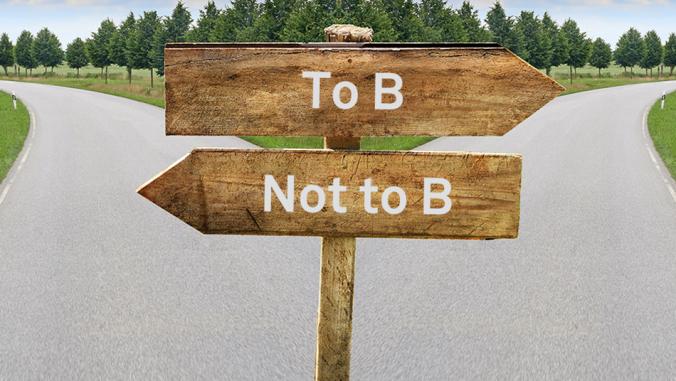Better (Red) Than Dead
There’s a fair bit of cynicism out there about Product (Red), the celebrity-inspired idea that we can help poor victims of AIDS in Africa by going shopping.
There’s a fair bit of cynicism out there about Product (Red), the celebrity-inspired idea that we can help poor victims of AIDS in Africa by going shopping. See, for example, the pointed parody at www.buylesscrap.org, which says, among other things, “Join us in rejecting the ti(red) notion that shopping is a reasonable response to human suffering.”
Then again, there’s this number: $110 million. That’s the amount of money that (Red) partners have generated for the Global Fund To Fight AIDS, Tuberculosis and Malaria to provide AIDS treatment in Ghana, Rwanda, Swaziland and Lesotho. Bono and Bobby Shriver created Product (Red) a couple of years ago, and now you can buy (Red) phones from Motorola, (Red) iPods from Apple, (Red) greeting cards from Hallmark, (Red) laptops from Dell, (Red) shoes from Converse and (Red) watches from Emporio Armani.
The latest endorsement for Product (Red) comes from Bill Gates, the chairman of Microsoft, another partner, who has an essay in the current issue of Time about what he calls “creative capitalism,” by which he means using the power of business to solve big social problems. He says this about (Red):
It’s a great thing: the companies make a difference while adding to their bottom line, consumers get to show their support for a good cause, and — most important — lives are saved. In the past year and a half, (RED) has generated $100 million for the Global Fund to Fight AIDS, Tuberculosis and Malaria, helping put nearly 80,000 people in poor countries on lifesaving drugs and helping more than 1.6 million get tested for HIV. That’s creative capitalism at work.
I’ve been thinking about Product (Red) for the last couple of weeks, ever since I interviewed Tamsin Smith, the company’s president, in the latest of a series of conference calls on Leadership and CSR that I have been moderating for Net Impact. Tamsin, who is 41, went to work for Product (Red) in 2006, after nearly a decade at Gap, where she worked on public policy issues, with a focus on supply chains and Africa, which led her to Product (Red). She’s clearly passionate about the subject of AIDS and Africa.
One cool thing about Product (Red) that I didn’t know before we spoke: Partner companies are encouraged to source their products from Africa, where possible. So Gap, to pick one example, is creating clothing collections that are “INSPI(RED)” by different places in Africa. “In stores now are items that riff off the architecture, colors, textile history, flag and art of Ghana,” Tamsin tells me. Gap also prints the country of origin in each garment, so you’ll see “Made in Lesotho” or “Made in South Africa” on the labels on stamped into the fabric, as well as the notation that 100% African cotton is being used.
Motorola, for its part, buys packaging (cool cardboard slider boxes) for the SLVR phones that it sells in the UK from Morija Printworks in Lesotho. And Hallmark buys mudcloth bags from Mali. (See the photos below). Converse and Armani are doing business in Madagascar. These initiatives take (Red) beyond cause marketing and charity to generate jobs and economic development. “There is a real connection to the continent,” Tamsin says
So why do I have misgivings about Product (Red)? Three reasons, I think. One is that the enterprise could be more transparent about how it is raising its money. We’re told that Dell donates $50 to the Global Fund for each laptop it sells, and that Apple gives t $10 for each Nano. But most of the other companies won’t say how much of the cost of their product goes to the Global Fund, nor will they disclose how much each company has raised over time. So if I buy a Hallmark card, am I giving a penny, a nickel or a dime? There’s no way to know. Tamsin says it would be a “significant competitive disadvantage” for the companies to release sales data. Really? Then wait six months or even a year, after the data is too old to have value, and release the information then. After all, if all these companies want credit for supporting a good cause, we ought to be able to know how much financial support they are actually delivering.
My second concern goes to the issue of consumption. Remember after Sept. 11 when President Bush told us to respond to the terrorist attacks by going shopping? This year’s tax rebates were intended to get Americans to go shopping to stimulate the economy. But Americans already consume way too much stuff. The message of Product (Red) is that we can buy that new cell phone or wrist watch and feel good about it because we are helping victims of AIDS.
I’ll put my third reason in the form of a question: Once a consumer buys something branded by Product (Red), is the consumer then more or less likely to give some of their own money (or volunteer, or write their congressman) to fight AIDS or global poverty? I don’t know, and neither do the people at Product (Red). Bono has apparently expressed the hope that Product (Red) will be “a gateway drug to the One campaign,” his laudable efforts to fight global poverty. If he is right, that’s a good reason to applaud Product (Red). But what if, after buying that Gap T-shirt, consumers feel they’ve done their part? What if Product (Red) becomes a substitute for either activism or charitable giving? I’d like to see the group try to answer those questions, however imperfectly.
Still, I keep coming back to that number: $110 million. That’s a lot of money, and it has surely saved a lot of lives. According to this story from The New York Times, (Red) contributions in Rwanda
have built 33 testing and treatment centers, supplied medicine for more than 6,000 women to keep them from transmitting H.I.V. to their babies, and financed counseling and testing for thousands more patients.
So, yes, better (Red) than dead.** Better more shopping if it leads to more drugs for AIDS treatment. That’s my conclusion, at least. I’m even thinking—just thinking, mind you—of buying one of those (Red) Armani watches.
**For those of you too young to know, Better Dead Than Red was an anti-communist slogan of the 1950s.







